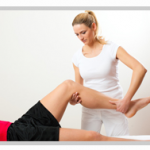PELVIC PAIN AND PELVIC FLOOR DYSFUNCTION What is pelvic pain and pelvic floor dysfunction? There are a number of conditions which cause pain and pelvic floor dysfunction. We have discussed a few of those conditions here today. Fortunately most of the conditions are treated with physiotherapy interventions. Pelvic pain and dysfunction Common conditions related with internal pelvic structures: Provoked vestibulodynia: In this your pelvic area is very sensitive to touch or pressure. You will feel pain with light touch, pressure, inserting tampons, wearing tight pants or intercourse. urinary urgency Vaginismus: You feel difficulty and/or pain with vaginal penetration. This will lead to avoidance of sexual activity or internal pelvic examination. Bladder pain syndrome: You feel pain and pressure with urge to urinate at any time. You will get an increased urge to urinate. Symptoms usually starts with bladder infection. Dysmenorrhea: You will feel painful cramps with…
Read More



